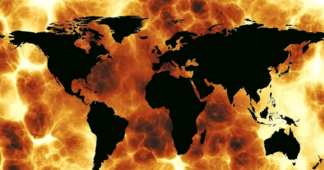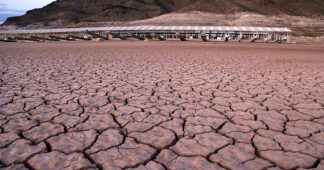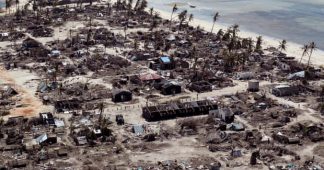By Rebecca Falconer
Dec 27, 2021
Ten of 2021’s most extreme weather events in the world were driven by climate change and caused a total of $170.3 billion in damage — with the deadly Hurricane Ida that struck the U.S. the most costly, per a new study.
Why it matters: Each of the 10 most destructive weather events caused at least $1.5 billion in damage, and Ida cost $65 billion, according to the study by U.K. charity Christian Aid.
- “Most of these estimates are based only on insured losses, meaning the true financial costs are likely to be even higher,” per a statement accompanying the study, published Monday.
- Christian Aid notes that insurer Aon has warned that 2021 is set to be the sixth time global natural catastrophes have cost more than $100 billion — with all six occurring since 2011.
What they’re saying: “The costs of climate change have been grave this year, both in terms of eyewatering financial losses but also in the death and displacement of people around the world,” said report author Kat Kramer, Christian Aid’s climate policy lead, in a statement.
- “Be it storms and floods in some of the world’s richest countries or droughts and heatwaves in some of the poorest, the climate crisis hit hard in 2021.”
By the numbers: 2021’s most costly weather events, according to Christian Aid:
- Hurricane Ida — $65 billion.
- European floods — $43 billion.
- Texas winter storm —$23 billion.
- Henan floods (China) — $17.6 billion.
- British Columbia floods — $7.5 billion.
- France’s “cold wave” — $5.6 billion.
- Cyclone Yaas (India, Bangladesh) — $3 billion
- Australian floods — $2.1 billion.
- Typhoon In-fa (China, Philippines, Japan) — $2 billion.
- Cyclone Tauktae (India, Sri Lanka, Maldives) — $1.5 billion.
What else they found: Financial costs are usually higher in richer countries because they have higher property values and can afford insurance, according to the report. But some of the most devastating extreme weather events in 2021 hit poorer nations.
- These extreme weather events have caused severe human suffering from food insecurity, drought and other related events causing mass displacements and loss of life, the report notes.
- The study also examines the impact of slow-developing crises, such as the drought in Central Africa’s Chad Basin. There, Lake Chad has shrunk 90% since the 1970s, threatening the lives and livelihoods of millions of the world’s poorest who live in the region.
The big picture: Extreme weather events are the clearest way we’re feeling climate change in our daily lives — and this year’s ones are a preview of even more turbulent times, Axios’ Andrew Freedman and Kia Kokalitcheva note.
- A study by the UN’s Intergovernmental Panel on Climate Change (IPCC) this year found an “unequivocal” connection between human-caused global warming and extreme weather.
The bottom line: The COP26 climate summit in Glasgow, Scotland, “generated plenty of headlines, but without concrete emissions cuts and financial support the world will continue to suffer,” Christian Aid’s report states.
- “One glaring omission from the outcome in Glasgow was a fund to deal with the permanent loss and damage caused by climate change,” the study adds. “This is one issue which will need to be addressed at COP27 in Egypt in 2022.”
- Kramer noted “it is clear that the world is not on track to ensure a safe and prosperous” future.
Read the full report, via DocumentCloud
Published at www.axios.com
We remind our readers that publication of articles on our site does not mean that we agree with what is written. Our policy is to publish anything which we consider of interest, so as to assist our readers in forming their opinions. Sometimes we even publish articles with which we totally disagree, since we believe it is important for our readers to be informed on as wide a spectrum of views as possible.











